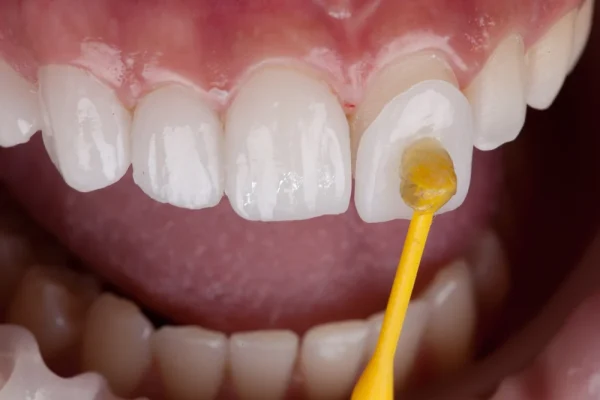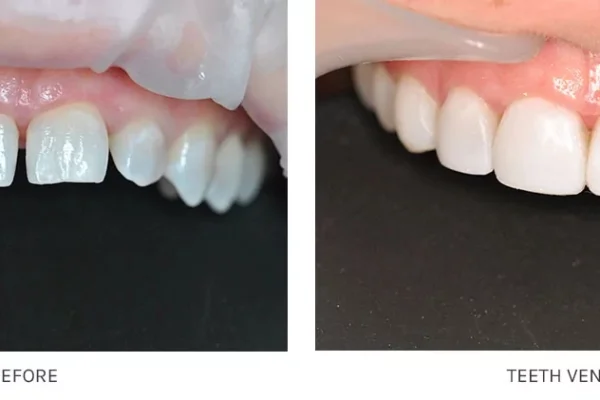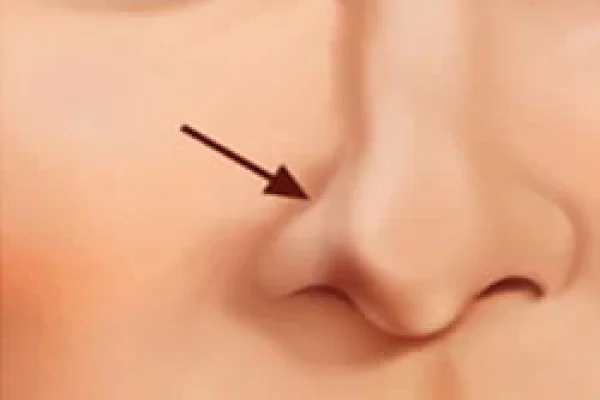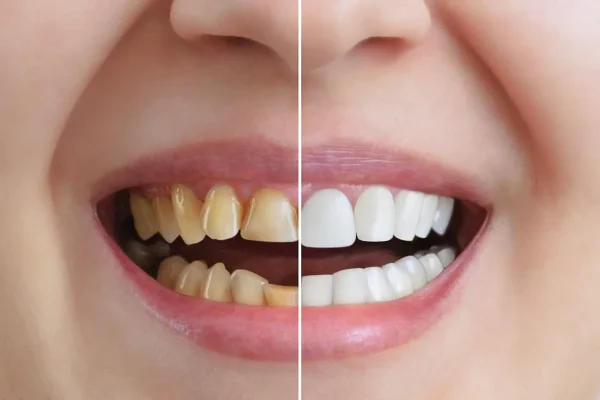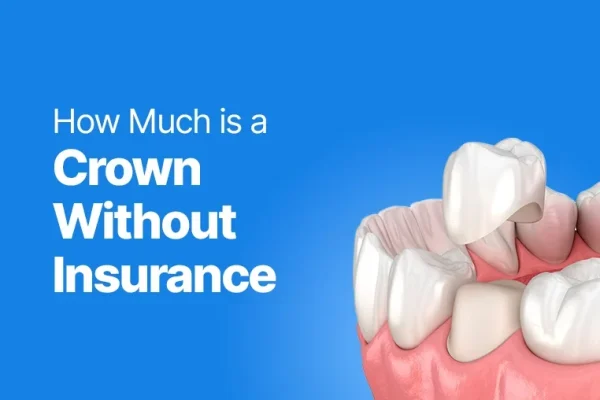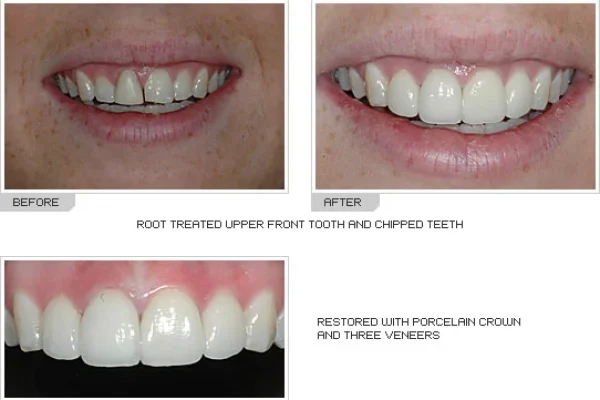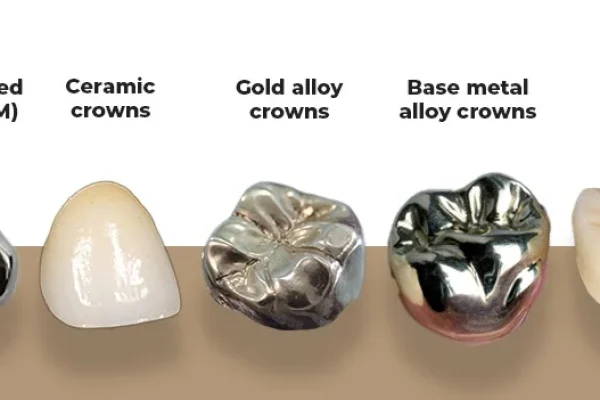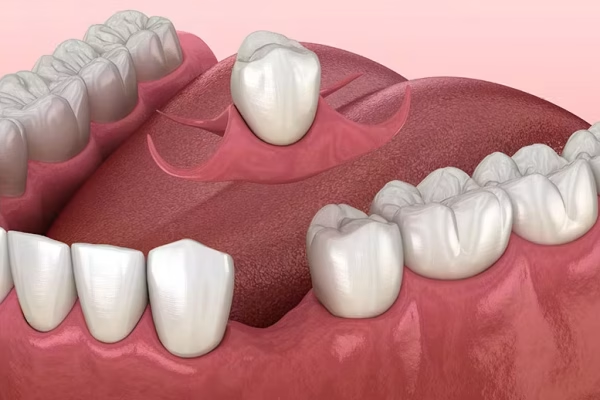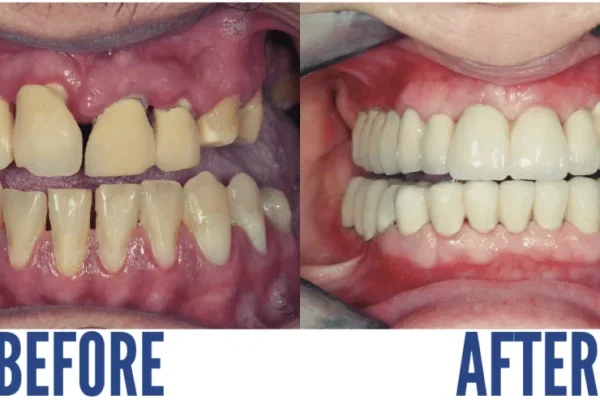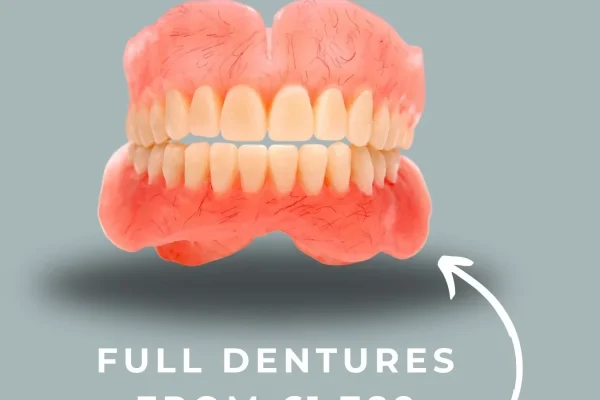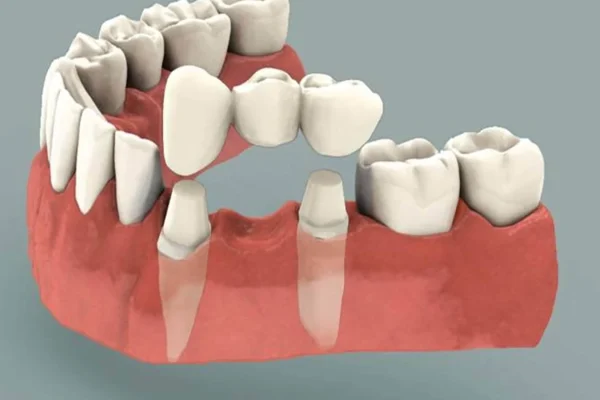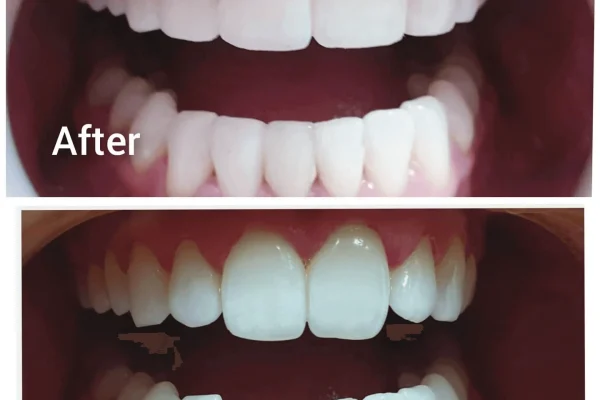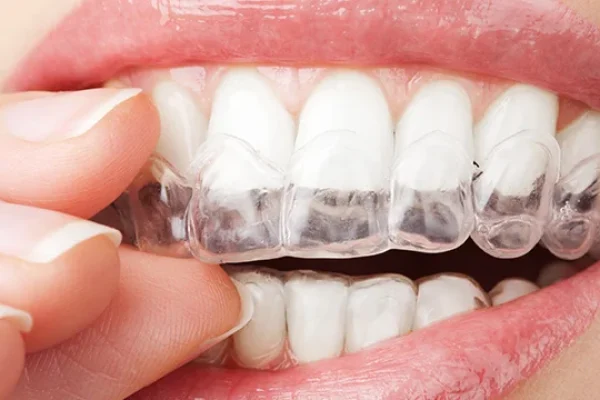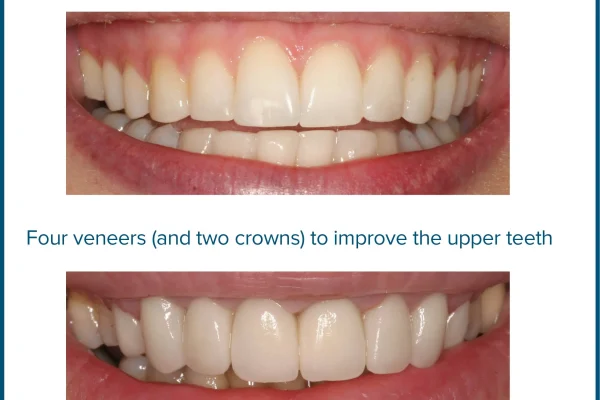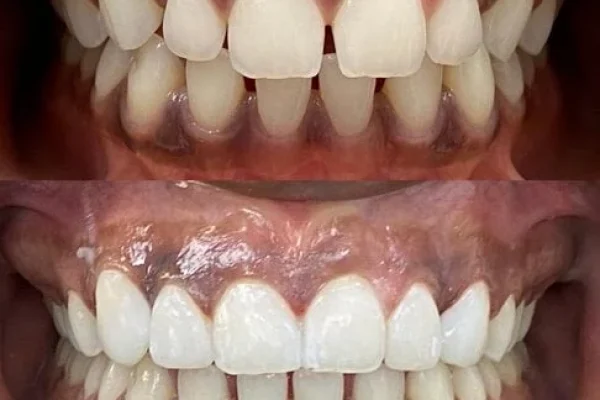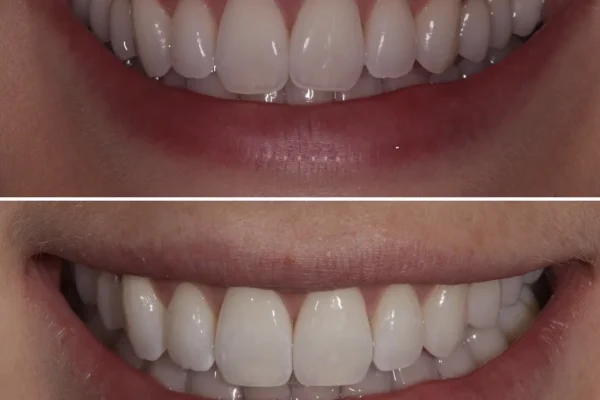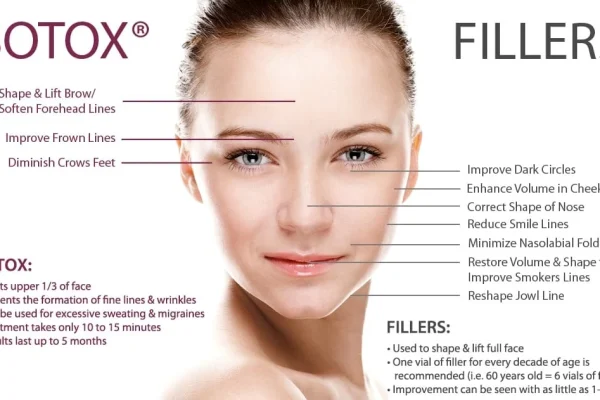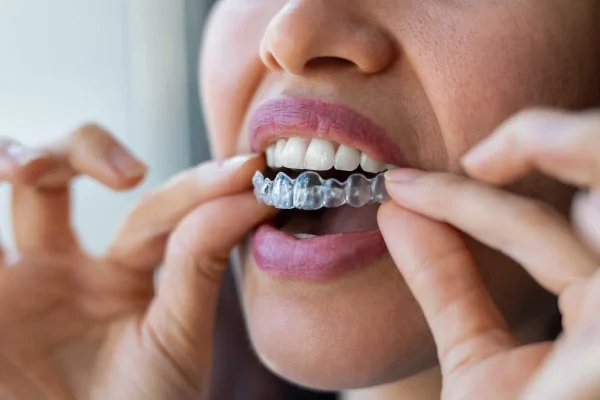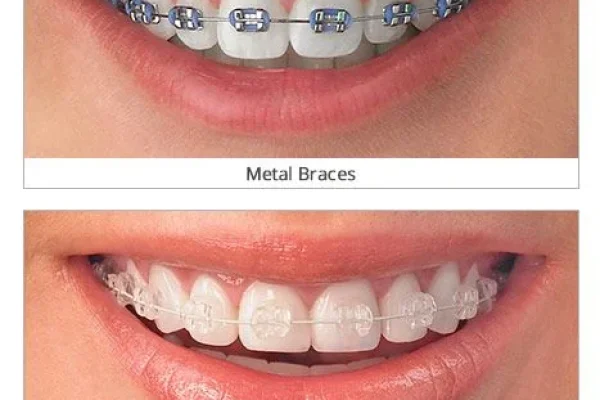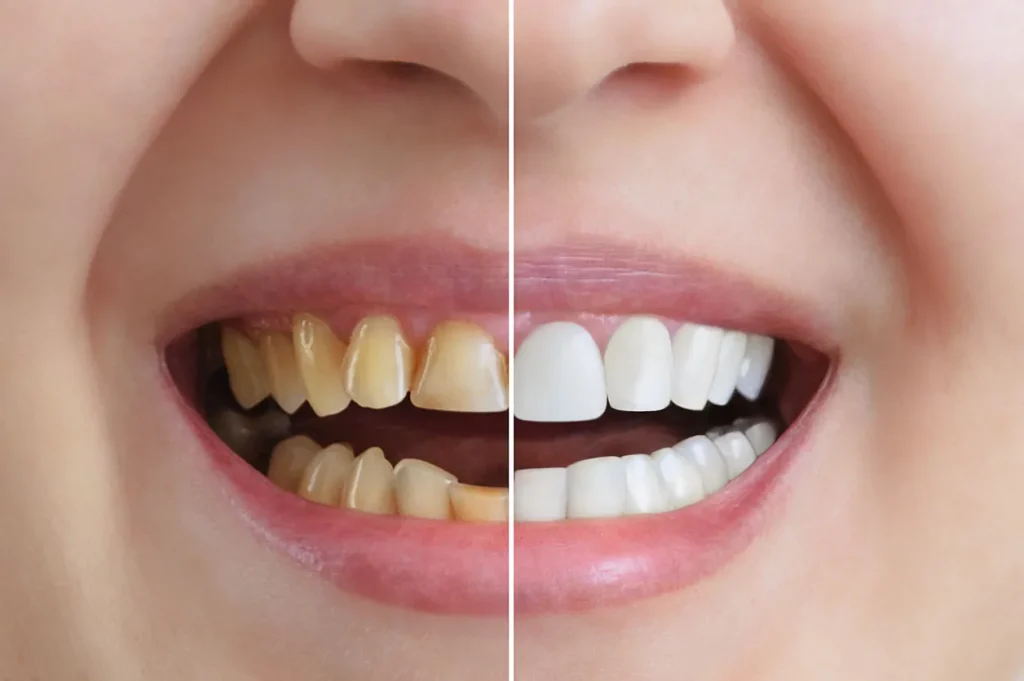
Table of Contents
ToggleKey Takeaways
-
- Finding a “cosmetic dentist near me” is often the first step towards a significant personal transformation, boosting confidence and well-being.
-
- This guide aims to demystify cosmetic dentistry, empowering you to find top local experts and understand various treatments, costs, and options.
-
- Cosmetic dentists combine artistry with scientific precision to enhance smiles, focusing on aesthetics while ensuring a healthy oral foundation.
-
- Popular procedures include teeth whitening, composite bonding, porcelain veneers, orthodontics, dental implants, and full smile makeovers.
- The cost of cosmetic dentistry, especially for full makeovers or procedures like veneers and implants, varies widely depending on complexity, materials, and the dentist’s expertise.
Looking for a Trusted ‘Cosmetic Dentist Near Me’?: Key Steps to Pinpoint Highly-Rated Professionals in Your Area
When the thought “I need a trusted ‘cosmetic dentist near me'” solidifies into a determined mission, knowing how to search effectively becomes paramount. It’s no longer just about finding a listing; it’s about identifying a professional whose skill, artistry, and patient care align perfectly with your unique needs and aesthetic aspirations. Your initial foray will likely be online, and mastering this digital search is the first key. Employing precise search terms like “cosmetic dentists near me,” “cosmetic dentistry [your town/city],” or even “best smile makeover [your area]” can significantly narrow the field. Don’t just stop at the first page of results; delve deeper. Once you have a shortlist, the real detective work begins. Patient reviews are an invaluable resource. Look for consistent themes in feedback – do patients praise the dentist’s communication, the gentleness of their approach, the quality of the results, and the overall clinic atmosphere? Star ratings, often prominently displayed (think “5* Expert Team” or “Top Rated Dentist“), offer a quick snapshot, but always read the accompanying comments to understand the context behind those stars. A crucial step is scrutinizing before-and-after galleries. These visual testimonials speak volumes about a dentist’s capabilities and their aesthetic style. Do the “after” smiles look natural, or do they have a uniform, cookie-cutter appearance? You’re looking for transformations that enhance, not overpower, individuality.
Pay close attention to how practices present themselves, especially location-specific ones. Titles like “Cosmetic Dentist Watford, Hertfordshire” or “Cosmetic Dentist In Ealing” are straightforward, but look for additional clues. For instance, a listing such as “Best Cosmetic Dentist in London UK | Cosmetic Dentistry Near Me | E11even Dental” not only states location but also makes a claim of excellence and might name a specific, reputable clinic. Similarly, “Cosmetic Dentist Near Me | Greenwich Smile Makeovers | Top Rated” highlights a specialty (smile makeovers) and reinforces quality. Some practices cleverly use their local listings to spotlight highly sought-after services, for example, “5* Composite Bonding” or “Smile makeover expert near me.” This targeted approach can help you find a dentist already proficient in the specific treatment you might be considering. Beyond the digital footprint, delve into the dentist’s credentials. Are they members of respected professional bodies like the British Academy of Cosmetic Dentistry (BACD)? How many years of experience do they have, particularly in cosmetic procedures? Do they list any specialist interests or further qualifications in aesthetic dentistry? A truly trusted cosmetic dentist will be transparent about their expertise and passionate about their craft. This thorough approach will help you filter the myriad options and pinpoint professionals truly capable of transforming your smile and boosting your confidence.
What Exactly Is a Cosmetic Dentist and What Services Do They Typically Offer?
At its heart, a cosmetic dentist is a dental professional who possesses a keen eye for aesthetics, a deep understanding of smile dynamics, and the advanced skills to enhance the appearance of a patient’s teeth, gums, and overall smile. While all general dentists are trained to address oral health issues, a cosmetic dentist places a significant emphasis on the art and science of beauty in relation to oral structures. Their focus often extends beyond mere function to encompass the harmony, balance, and attractiveness of your smile. This doesn’t mean oral health is neglected – far from it. A healthy foundation is absolutely crucial for any successful cosmetic dental work. Think of it this way: a general dentist ensures your teeth are healthy and functional; a cosmetic dentist takes that healthy foundation and elevates its aesthetic appeal, addressing concerns that might range from subtle discolouration to more complex structural or alignment issues. The scope of cosmetic dentistry is wonderfully broad, aiming to achieve a result that is not only beautiful but also looks and feels natural, complementing the individual’s facial features and personality.
Cosmetic dentists are adept at resolving a wide array of common dental aesthetic concerns. These can include stained or yellowed teeth, chipped or cracked teeth, gaps between teeth (diastemas), misaligned or crowded teeth, uneven tooth length or shape, worn-down teeth, and even “gummy smiles” where an excessive amount of gum tissue is displayed. The significance of cosmetic dentistry often transcends the purely physical. A smile transformation can have a profound impact on an individual’s confidence, self-esteem, and even their social and professional interactions. When you feel good about your smile, you’re more likely to share it freely, which can positively influence how you perceive yourself and how others perceive you. The services offered are diverse, ranging from relatively simple procedures like teeth whitening and composite bonding to more comprehensive treatments such as porcelain veneers, orthodontic alignment, and full smile makeovers. Each treatment plan is, or should be, highly personalized, tailored to the patient’s specific desires, dental condition, and overall facial aesthetics. The initial consultation with a cosmetic dentist is therefore a critical step, involving a detailed discussion of your goals and a thorough examination to determine the most appropriate and effective path to your dream smile.
What Is Another Name or Specialization for a Cosmetic Dentist?
While “cosmetic dentist” is the most widely recognized term, you might occasionally encounter the phrase “aesthetic dentist.” Both terms essentially refer to the same type of dental professional: one who focuses on improving the appearance of a patient’s smile. The word “aesthetic” (or “esthetic” in American English) directly relates to the principles of beauty and artistic taste, underscoring the artistic component inherent in this field of dentistry. It’s important to understand, particularly in the UK, that “cosmetic dentistry” or “aesthetic dentistry” is not a GDC (General Dental Council) registrable specialty in the same way that, for example, “orthodontics” (specialising in teeth straightening) or “periodontics” (specialising in gum disease) are. This means a dentist cannot formally call themselves a “specialist cosmetic dentist” on the GDC register. Instead, it’s an area of special interest or focused practice. Dentists who excel in cosmetic work have typically undertaken extensive postgraduate education, attended numerous courses, and dedicated a significant portion of their clinical practice to mastering the art and science of aesthetic procedures. They invest heavily in learning advanced techniques, understanding new materials, and honing their artistic skills to create beautiful, natural-looking results. So, while there isn’t a distinct, formally specialized title beyond “dentist” with a focus on cosmetic work, terms like “aesthetic dentist,” or phrases like “dentist with a special interest in cosmetic dentistry,” aim to convey this dedicated focus. Patients seeking these services should look for evidence of this commitment through portfolios, patient testimonials, and memberships in relevant professional organizations like the British Academy of Cosmetic Dentistry (BACD) or the American Academy of Cosmetic Dentistry (AACD), which often signify a higher level of engagement and expertise in the field. The key is that they’ve chosen to elevate their skills specifically in the realm of smile enhancement, blending artistry with precise dental science.
Do All General Dentists Perform Cosmetic Work to the Same Extent?
The straightforward answer is no, not all general dentists perform cosmetic work to the same extent, nor do they all possess the same level of expertise or passion for aesthetic procedures. While the foundational training of every general dentist includes an understanding of basic restorative procedures that can have cosmetic implications (like tooth-coloured fillings), the realm of advanced cosmetic dentistry often requires significant additional training, a specific artistic inclination, and a substantial investment in specialized materials and technology. Think of it like this: every qualified medical doctor can stitch a wound, but if you needed intricate plastic surgery on your face, you’d seek out a specialist plastic surgeon. Similarly, while your general dentist is perfectly equipped for check-ups, fillings, and addressing general oral health, a dentist who has actively pursued a focus in cosmetic dentistry will typically offer a wider range of aesthetic treatments and have a more refined skill set for achieving highly nuanced cosmetic results. These dentists often dedicate a large portion of their continuing professional development to courses and workshops specifically on topics like smile design, veneer placement, advanced composite bonding techniques, and the latest in dental ceramics. They are more likely to have invested in cutting-edge equipment, such as digital smile design software, intraoral scanners, and high-magnification loupes, which aid in the precision required for top-tier cosmetic work. Furthermore, a dentist with a strong cosmetic focus will usually have an extensive portfolio of before-and-after cases, showcasing their experience and the quality of their aesthetic outcomes. They tend to approach treatment planning with a more artistically critical eye, considering factors like facial harmony, lip line, and tooth proportions in minute detail. So, while many general dentists can and do offer some cosmetic services (like teeth whitening or simple white fillings), those who truly excel in and dedicate a significant part of their practice to cosmetic dentistry generally operate at a different level of complexity, artistry, and breadth of service in this specific domain.
What Are the Key Cosmetic Dental Treatments a Patient Might Consider?
The palette of cosmetic dental treatments available today is impressively broad, catering to a wide spectrum of aesthetic desires, from subtle enhancements to dramatic smile transformations. A patient considering cosmetic dentistry has a versatile toolkit at their disposal, and the choice of treatment, or combination of treatments, will depend entirely on their individual goals, current dental condition, and budget. One of the most popular and accessible treatments is Teeth Whitening (or Bleaching). This procedure is designed to lighten the shade of natural teeth, removing stains caused by food, drink, smoking, or ageing, resulting in a brighter, more youthful smile. For addressing imperfections like chips, small gaps, or misshapen teeth, Composite Bonding is a highly effective and minimally invasive option. This involves applying a tooth-coloured resin material directly to the tooth surface, sculpting it into the desired shape, and then hardening it with a special light. Porcelain Veneers represent a more comprehensive solution for transforming a smile. These are thin, custom-made shells of ceramic material that are bonded to the front surface of teeth, capable of changing their colour, shape, size, or length. They are renowned for their durability and stain resistance. For misaligned or crooked teeth, Orthodontics plays a key role. This isn’t just about traditional metal braces anymore; options now include clear aligners (like Invisalign), ceramic braces, and lingual braces (fitted behind the teeth), making teeth straightening more discreet and appealing to adults. Dental Crowns (or Caps), while often used for restorative purposes, can also be highly cosmetic, especially when made from all-porcelain or zirconia materials. They cover the entire visible portion of a tooth, improving its strength, shape, and appearance. For missing teeth, Dental Implants offer a permanent and natural-looking replacement, while Dental Bridges can also fill gaps by anchoring artificial teeth to adjacent natural teeth or implants. Other treatments include Gum Contouring (or Gingivectomy) to address a “gummy smile” by reshaping the gum line, and Smile Makeovers, which typically involve a combination of several of these procedures to achieve a comprehensive aesthetic overhaul. Each of these treatments serves a distinct purpose, and a skilled cosmetic dentist will guide the patient in selecting the most appropriate options to achieve their desired outcome.
Which Specific Dental Problems Can Cosmetic Dentistry Effectively Solve?
Cosmetic dentistry is a remarkably versatile field, equipped to tackle a multitude of aesthetic dental imperfections that can detract from an individual’s smile and confidence. One of the most common issues addressed is Stained or Discoloured Teeth. Whether it’s extrinsic staining from coffee, tea, red wine, or smoking, or intrinsic discolouration due to medications, ageing, or trauma, cosmetic procedures like professional teeth whitening or the placement of veneers can dramatically brighten a smile, restoring a more youthful and vibrant appearance. Chipped, Cracked, or Broken Teeth are another frequent concern. Minor chips can often be seamlessly repaired with composite bonding, where a tooth-coloured resin is sculpted to match the natural tooth. For more significant fractures or damage, porcelain veneers or dental crowns offer a more robust and aesthetically pleasing solution, restoring both the form and function of the tooth. Gaps Between Teeth (Diastemas), particularly between the front teeth, can be a source of self-consciousness for many. Cosmetic dentistry offers several solutions, including composite bonding to build up the teeth and close the space, porcelain veneers to cover the gaps, or orthodontic treatment (like clear aligners) to move the teeth into closer alignment. Misaligned or Crooked Teeth can also be effectively addressed. While comprehensive orthodontic treatment is often the ideal long-term solution for significant misalignment, options like “instant orthodontics” using veneers can provide a quicker aesthetic fix for minor irregularities in suitable cases. Similarly, clear aligner therapy is a popular cosmetic orthodontic choice for adults. Uneven or Irregularly Shaped Teeth, or teeth that appear too small or too large in proportion to the rest of the smile, can be reshaped or resized using composite bonding or porcelain veneers to create a more harmonious and balanced appearance. Worn-Down Teeth, often a result of bruxism (teeth grinding) or acid erosion, can be restored to their original length and shape with bonding, veneers, or crowns, rejuvenating the smile. Finally, a “Gummy Smile,” where an excessive amount of gum tissue is visible when smiling, can be corrected through gum contouring procedures, which carefully reshape the gum line to reveal more of the natural tooth structure, creating a more proportionate and aesthetically pleasing smile. These examples highlight the transformative power of cosmetic dentistry in addressing a wide range of dental concerns.
What Is the Practical Difference Between a General Dentist and a Cosmetic Dentist Visit?
While both a general dentist and a dentist with a strong focus on cosmetic procedures operate within the broader field of dentistry, the nature and emphasis of a visit can differ significantly, particularly during the consultation and treatment planning stages. A visit to your general dentist is typically centred on maintaining your overall oral health. The primary goals are prevention, diagnosis, and treatment of dental diseases. Your check-up will involve screening for cavities, gum disease, oral cancer, and other potential health issues. Treatments might include cleanings, fillings, root canals, or extractions – all primarily aimed at restoring or preserving dental health and function. While many modern general dentists use tooth-coloured materials and are mindful of aesthetics, the driving force is clinical necessity.
Conversely, a visit to a cosmetic dentist, especially for an initial consultation, places a much stronger emphasis on your aesthetic goals and desires. While your underlying oral health remains a crucial foundation (no cosmetic work should proceed on an unhealthy mouth), the conversation will pivot towards how you want your smile to look. The cosmetic dentist will engage in a detailed discussion about your aspirations: What do you like or dislike about your current smile? Are you concerned about colour, shape, alignment, or a combination of factors? They might use tools like digital smile design software to show you potential outcomes or look through portfolios of similar cases. The examination will still assess your oral health, but it will also involve a detailed aesthetic analysis – considering tooth proportions, smile line, lip support, and how your smile harmonizes with your facial features. Treatment planning is often more elective and patient-driven in cosmetic dentistry. You might discuss various options, each with different aesthetic outcomes, timelines, and costs (e.g., bonding vs. veneers for chipped teeth). The approach is often more akin to an artistic collaboration, where the dentist combines their technical skill with an understanding of aesthetic principles to achieve the patient’s desired look. While a general dentist visit is fundamental for health, a cosmetic dentist visit is often the gateway to enhancing appearance and boosting self-confidence through targeted aesthetic improvements, sometimes involving procedures that are not strictly ‘necessary’ for health but profoundly impact well-being.
How Important Is Cosmetic Dentistry for an Individual’s Self-Esteem and Quality of Life?
The importance of cosmetic dentistry for an individual’s self-esteem and overall quality of life can be profoundly significant, extending far beyond the mere physical alteration of teeth. A smile is one of our most prominent facial features and plays a crucial role in social interaction, communication, and self-perception. When individuals are self-conscious about their smile – perhaps due to discolouration, misalignment, chips, or missing teeth – it can create a ripple effect through many aspects of their lives. They might avoid smiling openly, cover their mouth when speaking or laughing, or shy away from social situations and even photographic opportunities. This constant self-monitoring and inhibition can erode self-confidence and lead to feelings of inadequacy or unattractiveness. Cosmetic dentistry, by addressing these aesthetic concerns, can act as a powerful catalyst for positive psychological change. When a person achieves a smile they are proud of, it often unlocks a newfound sense of freedom and confidence. They may find themselves smiling more readily, engaging more openly in conversations, and feeling more comfortable and assertive in both personal and professional settings. This boost in self-esteem can have tangible benefits: improved social interactions, enhanced career prospects (as a confident demeanour is often perceived positively), and a general uplift in mood and outlook. For many, the investment in cosmetic dentistry is not just about achieving “perfect teeth”; it’s about investing in themselves, their happiness, and their ability to navigate the world with greater assurance. The psychological benefits – feeling more attractive, more youthful, and more willing to express joy – often far outweigh the physical transformation itself, contributing to a demonstrably improved quality of life. It’s a testament to how intricately our physical appearance, particularly our smile, is linked to our inner emotional state and our engagement with the world around us.
What Are the Most Popular and Common Cosmetic Dental Procedures Available Today?
In the ever-evolving landscape of aesthetic enhancement, cosmetic dentistry stands out for its ability to deliver transformative results, often with remarkable subtlety and precision. The demand for a more radiant and harmonious smile has propelled certain procedures to the forefront, making them staples in the repertoire of cosmetic dentists worldwide. These popular treatments are sought after for their effectiveness in addressing common aesthetic concerns, their relatively predictable outcomes, and their capacity to significantly boost a patient’s confidence. Topping the list, almost ubiquitously, is Teeth Whitening. This non-invasive procedure offers a quick and impactful way to reverse years of staining and discolouration, revealing a brighter, more youthful smile. Its accessibility and immediate results make it a perennial favourite. Closely following is Composite Bonding. This versatile technique involves the artistic application of tooth-coloured resin to repair chips, close small gaps, reshape teeth, or conceal minor imperfections. Its minimally invasive nature and cost-effectiveness contribute significantly to its popularity. For more comprehensive smile transformations, Porcelain Veneers remain a highly sought-after option. These custom-made ceramic shells are bonded to the front surfaces of teeth, offering a durable and highly aesthetic solution for changing tooth colour, shape, size, and alignment, often forming the cornerstone of “smile makeovers.” The rise of adult orthodontics, particularly Clear Aligners (like Invisalign), has also cemented its place as a common cosmetic procedure. The ability to straighten teeth discreetly, without traditional metal braces, appeals to a broad demographic seeking improved alignment. Furthermore, the replacement of missing teeth with Dental Implants is increasingly viewed through a cosmetic lens; while functionally crucial, the aesthetic integration of an implant-retained crown is paramount for a natural-looking result. These procedures, individually or in combination, represent the most common pathways patients take to achieve their desired aesthetic outcomes, reflecting a societal value placed on a healthy, attractive smile.
What Is Involved in Bonding a Tooth and How Does It Enhance Your Smile’s Appearance?
Dental composite bonding, often simply referred to as “bonding,” is a remarkably versatile and minimally invasive cosmetic dental procedure designed to enhance the appearance of teeth by addressing a variety of minor imperfections. The process involves the meticulous application of a tooth-coloured composite resin – a putty-like material that can be sculpted and shaped – directly onto the tooth surface. This resin is then hardened and set using a high-intensity curing light. The beauty of bonding lies in its conservative nature; typically, little to no natural tooth structure needs to be removed, making it an excellent option for patients seeking aesthetic improvements without committing to more permanent alterations like veneers or crowns in certain situations. The procedure usually begins with the dentist selecting a shade of composite resin that closely matches the natural colour of your teeth, ensuring a seamless and undetectable repair. The tooth surface is then prepared by lightly etching it to create a microscopic roughness, which helps the bonding material adhere securely. A conditioning liquid is applied, followed by the composite resin itself. The dentist skillfully sculpts and shapes the resin to repair the chip, close the gap, lengthen the tooth, or mask the discolouration, paying close attention to achieving a natural contour and appearance. Once the desired shape is achieved, the resin is hardened with the curing light. Finally, the bonded tooth is trimmed, smoothed, and polished to blend perfectly with the surrounding teeth, giving it a natural lustre and feel.
Composite bonding can significantly enhance your smile’s appearance in several ways. It’s an ideal solution for repairing chipped or cracked teeth, restoring their original integrity and aesthetics. It can effectively close small gaps (diastemas) between teeth, creating a more uniform and harmonious smile line. Bonding can also be used to improve the shape of misshapen or short teeth, adding length or altering contours for better symmetry. Furthermore, it can conceal minor discolourations or stains that may not respond well to teeth whitening. The benefits are numerous: it’s generally completed in a single visit, making it a time-efficient option; it’s relatively cost-effective compared to other cosmetic procedures like veneers; and, as mentioned, it’s minimally invasive, preserving your natural tooth structure. The result is an immediate improvement in the tooth’s appearance, leading to a more confident and aesthetically pleasing smile, all achieved with artistic precision and minimal intervention.
What Is a “Screw In Teeth” Formally Called and Is It a Widely Used Option for Tooth Replacement?
The colloquial term “screw in teeth” almost invariably refers to dental implants. This is a highly advanced and widely respected method for replacing missing teeth, considered by many dental professionals to be the gold standard solution due to its strength, longevity, and resemblance to natural teeth in both function and appearance. A dental implant itself is a small, biocompatible (usually titanium) post or screw that is surgically placed into the jawbone where a tooth is missing. This implant acts as an artificial tooth root, providing a strong and stable foundation for a replacement tooth or bridge. Over a period of several months, a process called osseointegration occurs, where the jawbone fuses with the titanium implant, creating an incredibly secure anchor. Once osseointegration is complete, an abutment (a connector post) is attached to the implant, and then a custom-made crown (the visible part of the replacement tooth, crafted to match your natural teeth) is fixed onto the abutment.
Dental implants are indeed a widely used and highly successful option for tooth replacement across the globe, and their popularity continues to grow. They are recommended in a multitude of circumstances, from replacing a single missing tooth to supporting a bridge for multiple missing teeth, or even anchoring a full denture for patients who have lost all their teeth (known as implant-retained or implant-supported dentures). The reasons for their widespread adoption are compelling: Durability and Longevity: With proper care, dental implants can last a lifetime. Preservation of Jawbone: Unlike other tooth replacement options, implants stimulate the jawbone, preventing the bone loss that typically occurs when a tooth root is missing. This helps maintain facial structure. Improved Function: Implants function like natural teeth, allowing you to eat, speak, and smile with confidence, without the slippage or discomfort sometimes associated with traditional dentures. Aesthetics: Implant-retained crowns are meticulously crafted to match the colour, shape, and size of your natural teeth, providing a virtually indistinguishable replacement. No Impact on Adjacent Teeth: Unlike traditional bridges, implants do not require the grinding down of adjacent healthy teeth for support. While the process involves a surgical component and can be more costly and time-consuming than some alternatives, the long-term benefits and high success rates make dental implants a premier and frequently chosen solution for permanent tooth replacement.
Is a Dental Bridge or a Dental Implant a Better Solution for Replacing Missing Teeth?
Choosing between a dental bridge and a dental implant for replacing missing teeth is a significant decision that depends on various individual factors, including the patient’s oral health, bone density, the location of the missing tooth (or teeth), aesthetic preferences, long-term goals, and budget. Both are effective solutions, but they have distinct advantages and disadvantages. A dental bridge literally “bridges” the gap created by one or more missing teeth. A traditional bridge consists of one or more artificial teeth (called pontics) held in place by dental crowns that are cemented onto the natural teeth (abutment teeth) on either side of the gap. For a bridge to be placed, these adjacent abutment teeth typically need to be prepared by removing some of their enamel to accommodate the crowns. Advantages of bridges include being a potentially quicker and sometimes less initially expensive option than implants. They are a well-established, non-surgical (in terms of implant placement) procedure. Disadvantages include the need to alter potentially healthy adjacent teeth, which can sometimes make them more susceptible to future problems. Bridges can also place additional stress on the abutment teeth. Furthermore, the bone underneath the pontic (the missing tooth area) is not stimulated and can recede over time, potentially affecting the aesthetics and stability of the bridge and surrounding gums.
A dental implant, as previously discussed, involves surgically placing a titanium post into the jawbone to act as an artificial root, onto which a crown is then attached. Advantages of implants are numerous: they do not require alteration of adjacent healthy teeth, thus preserving natural tooth structure. They stimulate the jawbone, preventing bone loss and maintaining facial integrity. Implants offer superior stability and function, feeling and performing much like natural teeth. With proper care, they can last a lifetime. Aesthetically, they can provide a very natural-looking result. Disadvantages include a higher initial cost compared to bridges, a longer treatment timeline due to the healing period required for osseointegration, and the need for a surgical procedure. Not everyone is an immediate candidate for implants; sufficient jawbone density is required, though bone grafting can often address this.
So, which is “better”? If long-term oral health, preservation of natural tooth structure, and bone maintenance are top priorities, and if budget and time allow, dental implants are generally considered the superior and more conservative option by many dentists. They offer a standalone solution that most closely mimics a natural tooth. However, a dental bridge can still be an excellent and appropriate choice for certain individuals, particularly if the adjacent teeth already require crowns, if surgery is contraindicated, or if time and cost are primary limiting factors. A thorough consultation with your cosmetic dentist, including an examination and discussion of your specific circumstances and preferences, is essential to determine the most suitable solution for you.
How Much Does a Full Tooth Makeover Typically Cost in the UK?
Embarking on a full tooth makeover, often referred to as a “smile makeover,” is a significant journey towards achieving your ideal smile, and naturally, understanding the potential financial investment is a critical part of the planning process. In the UK, the cost of a full tooth makeover can vary dramatically, as it’s not a one-size-fits-all procedure. Instead, it’s a highly personalized combination of different cosmetic and restorative dental treatments tailored to address an individual’s unique aesthetic goals and underlying dental needs. Therefore, giving a precise, universal figure is virtually impossible. However, we can explore the factors that influence the cost and provide some general guidance. The final price tag will depend on the complexity of your case, the number and types of procedures involved (e.g., veneers, implants, crowns, whitening, orthodontics), the materials chosen (for instance, porcelain veneers are typically more expensive than composite), the experience and reputation of the cosmetic dentist, the geographical location of the clinic (prices can be higher in major cities like London), and the specific technologies or advanced techniques utilized. A simple makeover involving teeth whitening and some minor composite bonding might cost a few hundred to a couple of thousand pounds. Conversely, a comprehensive makeover involving multiple porcelain veneers or dental implants across several teeth, potentially combined with orthodontic work, could range from several thousand to tens of thousands of pounds. For instance, a full set of porcelain veneers (often 6-10 teeth) can cost anywhere from £5,000 to £15,000 or more, depending on the chosen system and practitioner. If multiple dental implants are required, each implant (including the abutment and crown) can cost between £2,000 and £4,000. It’s crucial to have a detailed consultation with your chosen cosmetic dentist. They will conduct a thorough examination, discuss your aspirations, and then create a bespoke treatment plan outlining the recommended procedures and their associated costs. Many reputable clinics offer finance options or payment plans to help make these transformative treatments more accessible. Always ensure you receive a clear, itemised quote before committing to any treatment.
How Much Does a Full Tooth Makeover Typically Cost in Albania?
The cost of a full tooth makeover in Albania can vary significantly depending on the procedures involved, materials chosen, and the clinic’s reputation. On average, a complete smile makeover in Albania ranges from:
€2,000 to €8,000+
Breakdown by Procedure
| Treatment | Estimated Cost (per unit) |
|---|---|
| Porcelain or Emax Veneers | €250 – €350 per tooth |
| Composite Veneers | €120 – €180 per tooth |
| Teeth Whitening (Zoom, LED) | €150 – €300 |
| Gum Contouring | €100 – €300 |
| Orthodontics (e.g., Invisalign) | €1,200 – €2,500 |
| Dental Crowns | €200 – €350 per tooth |
| Implants (if needed) | €500 – €800 per unit |
| Full Smile Design & Planning | Often included or €100 – €300 |
Example Costs for Common Scenarios
▶ 6–8 Veneer Makeover
-
Ideal for: Front teeth only (top or both arches)
-
Cost: €1,800 – €2,800
▶ Full Arch Veneers (10–12 teeth)
-
Top teeth only
-
Cost: €2,500 – €4,200
▶ Full-Mouth Smile Makeover (20+ teeth)
-
May include a mix of veneers, crowns, whitening, and possibly implants
-
Cost: €5,000 – €8,000+
What Influences the Cost?
-
Number of teeth treated
-
Type of materials (e.g., composite vs. Emax porcelain)
-
Experience of the cosmetic dentist
-
3D Digital Smile Design inclusion
-
Extra treatments (e.g., implants, root canal, gum lift)
Pro Tip:
Many clinics offer all-inclusive packages for foreign patients, covering:
-
Consultation & smile design
-
Accommodation
-
Airport transfers
-
Follow-up care
These packages are attractive for dental tourists and can bring great value compared to Western European pricing (which often exceeds €15,000–€25,000 for a full makeover).
✅ Summary
| Makeover Type | Estimated Total Cost in Albania |
|---|---|
| Minor (6 composite veneers) | €700 – €1,200 |
| Mid-range (8–12 Emax veneers) | €2,000 – €4,200 |
| Full smile makeover (20+ teeth, mixed procedures) | €5,000 – €8,000+ |
Realistically, How Much Does It Cost to Make Your Teeth Look Perfect?
The concept of “perfect teeth” is inherently subjective; what one person considers perfect, another might view differently. This subjectivity is a key reason why pinpointing an exact cost for achieving this ideal is challenging. However, if we interpret “perfect” as achieving a smile that is healthy, harmonious, beautifully aligned, and appropriately coloured for your facial features and personal preferences, then the cost will be directly proportional to the extent of work required to reach that personalised state of perfection. Several critical factors contribute to the final bill. Firstly, the starting condition of your teeth and gums is paramount. If there are underlying health issues like gum disease or decay, these must be addressed before any cosmetic work can begin, adding to the overall cost. Secondly, the number of teeth involved in the transformation plays a significant role. Are you looking to enhance just the front “social six” teeth, or does your vision of perfection encompass a broader smile line, perhaps involving 8, 10, or even more teeth on both upper and lower arches? Thirdly, the complexity of the procedures required will heavily influence the price. A simple teeth whitening treatment is far less expensive than a full set of porcelain veneers or orthodontic treatment followed by veneers. If multiple complex procedures like dental implants, gum contouring, and crowns are needed, the costs will escalate accordingly.
The materials chosen are another major cost determinant. For example, high-quality porcelain veneers, known for their durability and natural translucency, are significantly more expensive than composite resin veneers or bonding. The specific brand or system of materials (e.g., different types of porcelain like Emax or Lumineers) can also affect pricing. Finally, the dentist’s expertise, experience, and geographic location are crucial. Highly skilled cosmetic dentists, particularly those with specialist interests, advanced training, and a strong reputation (often in major urban centres like London’s Harley Street district), may command higher fees, reflecting their investment in education, technology, and the quality of their results. Realistically, achieving a “perfect” smile could range from a few hundred pounds for very minor enhancements (like whitening) to upwards of £10,000 – £30,000, or even more, for complex, multi-disciplinary cases involving extensive restorations like full mouth veneers or multiple implants. A detailed consultation, including a thorough examination and discussion of your aesthetic goals, is essential to receive a personalised treatment plan and an accurate cost estimate tailored to your unique definition of “perfect.”
How Much Is 1 Fake Tooth in the UK, Considering Different Types like Implants or Crowns?
The cost of replacing “1 fake tooth” in the UK is not a single figure, as the term “fake tooth” can encompass several different types of dental restorations, each with its own materials, procedures, and associated price points. The most common options for replacing a single missing tooth are a dental implant with a crown, a traditional dental bridge, or a partial denture. Let’s break these down:
-
- Dental Implant with Crown: This is often considered the gold standard for single tooth replacement. The cost typically includes the implant fixture itself (the titanium screw), the abutment (connector piece), and the final crown that sits on top. In the UK, the total cost for a single dental implant can range significantly, generally from around £2,000 to £4,000. This variation depends on factors like the brand of implant system used, the material of the crown (e.g., porcelain fused to metal, all-ceramic like Emax or Zirconia), the complexity of the surgical placement, whether any bone grafting or sinus lift is required (which would be an additional cost), and the dentist’s expertise and clinic location.
-
- Traditional Dental Bridge: A 3-unit bridge (to replace one missing tooth) involves crowning the two adjacent teeth (abutments) to support an artificial tooth (pontic) in the middle. The cost for a 3-unit bridge can range from approximately £900 to £2,500 or more, depending on the materials used (e.g., porcelain-fused-to-metal, all-ceramic), the complexity, and the clinic. Remember, this option involves preparation (grinding down) of the adjacent teeth. A resin-bonded bridge (Maryland bridge), which is more conservative as it often requires less preparation of adjacent teeth, might be a slightly cheaper option, perhaps in the range of £500 to £1,500, but it’s not suitable for all situations, particularly in high-stress biting areas.
- Partial Denture: A removable partial denture that replaces a single tooth is generally the most budget-friendly option. The cost can vary from £300 to £800 or more, depending on the material (e.g., acrylic, flexible Valplast, or chrome-cobalt metal frame) and the complexity of the design.
It’s also important to consider what “fake tooth” might mean if it’s not a full replacement but a restoration of an existing damaged tooth. If you’re referring to a Dental Crown placed on a damaged but still present natural tooth (not an implant), the cost in the UK typically ranges from £500 to £1,500 per crown, again depending on the material (metal, porcelain-fused-to-metal, all-porcelain, zirconia) and other factors. Always consult with a dentist for an accurate assessment and quote tailored to your specific clinical situation and needs.
What Is the Average Cost for Composite Bonding for Minor Smile Corrections?
Composite bonding is a highly popular and relatively affordable cosmetic dental procedure, particularly well-suited for making minor smile corrections. It’s often priced per tooth, or sometimes per surface area being treated on a tooth. In the UK, the average cost for composite bonding typically ranges from £150 to £400 per tooth. However, this figure can fluctuate based on several influential factors. The extent and complexity of the bonding required is a primary driver of cost. A very small chip repair on a single tooth will naturally be at the lower end of the price spectrum. Conversely, if more extensive reshaping is needed, or if multiple surfaces of a tooth are being bonded (for example, to close a larger gap or completely change a tooth’s visible facade, sometimes referred to as a “composite veneer“), the cost per tooth will likely be higher. The dentist’s skill, experience, and artistic ability also play a role. Achieving truly seamless, natural-looking results with composite bonding requires considerable artistry and technical precision, and dentists who have honed these skills through advanced training and experience may charge more for their expertise.
The geographic location of the dental practice can also impact pricing, with clinics in major cities or more affluent areas often having higher overheads and consequently higher fees. The quality of the composite materials used can vary, although most reputable cosmetic dentists will use high-grade, durable, and aesthetically pleasing resins. Finally, the time taken for the procedure will be factored in; more intricate bonding work naturally requires more clinical time. For example, if you’re looking to address minor chips on two front teeth, you might budget around £300 to £800. If you’re considering composite bonding to close a small gap between your front teeth, it would likely fall within the per-tooth range mentioned above, applied to the two teeth forming the gap. Some dentists may offer a slightly reduced rate per tooth if multiple teeth are being treated in the same session. It’s always best to have a consultation with a cosmetic dentist who can assess your specific needs, discuss the desired outcome, and provide you with a precise, itemised quote for the proposed composite bonding treatment. Despite the variables, it remains one of the most cost-effective ways to achieve noticeable aesthetic improvements to your smile.
What Is the Estimated Cost for a Full Set of Dental Implants in the UK for Complete Smile Restoration?
A full set of dental implants for complete smile restoration, often referred to as full mouth rehabilitation with implants, represents a significant and transformative dental investment. This type of treatment is typically for individuals who have lost most or all of their teeth in one or both arches, or whose remaining teeth are unsalvageable and require extraction. The cost in the UK can vary enormously, generally ranging from £10,000 to £50,000 per arch (upper or lower jaw), and sometimes even more, depending on a multitude of complex factors. It’s crucial to understand that “a full set” doesn’t always mean an individual implant for every missing tooth. Common approaches include:
-
- Implant-Supported Full Arch Bridge (e.g., “All-on-4” or “All-on-6“): This popular technique involves placing typically 4 to 6 implants strategically in the jawbone to support a fixed, full-arch bridge (a complete set of prosthetic teeth). The cost for an All-on-4 or All-on-6 procedure per arch can range from approximately £12,000 to £25,000 or more. This often includes the surgical placement of implants, temporary teeth, and the final fixed bridge.
- Multiple Individual Implants Supporting Crowns/Bridges: In some cases, a greater number of individual implants might be placed to support separate crowns or smaller bridges across the arch. This approach can sometimes be more expensive due to the higher number of implants and prosthetic components, potentially pushing costs towards the upper end of the overall estimate.
The key factors influencing the total cost include:
- Number of implants required: More implants generally mean higher costs.
- Type and brand of implant system used: Premium implant systems may cost more.
- Material of the final prosthesis: The fixed bridge or crowns can be made from various materials (e.g., acrylic with a metal substructure, zirconia, porcelain), each with different cost implications. Zirconia or full porcelain options are typically more expensive but offer superior aesthetics and durability.
- Prerequisite surgeries: If significant bone loss has occurred, bone grafting or sinus lift procedures may be necessary before implant placement. These are additional surgical procedures with their own costs, potentially adding several thousand pounds to the total.
- Sedation: The type of sedation used during surgery (e.g., IV sedation) will also affect the cost.
- Dentist/Surgeon’s expertise and clinic location: Highly experienced implantologists and specialist oral surgeons, particularly in prime locations, may have higher fees.
- Diagnostic imaging: Costs for CT scans and detailed planning are usually factored in.
Given the complexity and significant investment involved, it is absolutely essential to have comprehensive consultations with experienced implant dentists. They will conduct thorough assessments, discuss all available options, and provide a detailed, itemised treatment plan and quotation. Many clinics offer financing options to help manage the cost of such extensive treatment.
What Is the General Price Range for a Full Set of Veneers in the UK for a Dramatic Smile Transformation?
A “full set” of veneers, typically aimed at achieving a dramatic smile transformation, usually refers to placing veneers on the teeth that are most visible when you smile – commonly the upper front six, eight, or ten teeth. Less frequently, it might also involve veneers on the lower front teeth. The general price range for a full set of high-quality porcelain veneers in the UK can vary significantly, but you could typically expect to invest anywhere from £4,000 to £15,000, or even more. This wide range is influenced by several key factors:
-
- Number of Veneers: The most obvious factor is how many veneers constitute your “full set.” If it’s six upper veneers, the cost will be lower than for ten upper veneers plus, say, six lower veneers. Each veneer is individually crafted and priced.
-
- Material Choice:
- Porcelain Veneers: These are the premium option, known for their durability, stain resistance, and incredibly natural, translucent appearance. They are custom-made in a dental laboratory. The cost per porcelain veneer typically ranges from £500 to £1,500+. Different types of porcelain (e.g., Emax, feldspathic) can also have different price points.
- Composite Veneers (Direct Veneers): These are made from tooth-coloured resin applied directly to the teeth and sculpted by the dentist in the chair. They are generally less expensive than porcelain, perhaps £200 to £500 per tooth, but may not last as long or resist staining as well as porcelain. A “full set” of composite veneers would therefore be considerably cheaper than porcelain.
- Material Choice:
-
- Dentist’s Expertise and Reputation: Highly experienced cosmetic dentists who have undertaken extensive postgraduate training in smile design and veneer placement, and who have a proven portfolio of excellent results, will often charge more. Their skill in achieving natural aesthetics, proper bite function, and longevity is a significant value.
-
- Clinic Location: Practices in major cities like London, especially in prestigious areas like Harley Street, tend to have higher fees compared to clinics in smaller towns, reflecting higher operational costs.
-
- Laboratory Costs: For porcelain veneers, the quality of the dental laboratory and the skill of the ceramist crafting the veneers play a huge role in the final aesthetic outcome and will be factored into the price. Master ceramists command higher fees.
- Complexity of the Case: If your case involves correcting significant misalignment, discolouration, or requires intricate smile design planning (e.g., using Digital Smile Design technology), this can add to the overall cost. Any prerequisite treatments, like teeth whitening for adjacent teeth or gum contouring, would be separate costs.
Therefore, if considering 8 upper porcelain veneers at an average of £800 per veneer, the cost would be around £6,400. If it’s 10 veneers at £1,000 each, that’s £10,000. It is absolutely crucial to have a detailed consultation where your dentist assesses your needs, discusses your goals, explains the options, and provides a fully itemised treatment plan and quote. Many clinics also offer finance plans.
How Much Might It Cost to Fix Rotting Teeth Using a Combination of Cosmetic and Restorative Procedures?
Addressing “rotting teeth,” or dental caries (decay), is first and foremost a health imperative. Before any cosmetic enhancements can be considered, the underlying decay must be thoroughly treated to restore the teeth to a state of health and function. The cost of fixing rotting teeth using a combination of restorative and potentially cosmetic procedures will therefore vary enormously based on the severity and extent of the decay, the number of teeth affected, and the types of treatments required. It’s a multi-stage process where health restoration precedes aesthetic refinement.
Here’s a breakdown of potential costs involved:
-
- Examination and Diagnosis: An initial consultation with X-rays to assess the extent of decay might cost £50 – £150.
-
- Dental Fillings: For small to moderate cavities, fillings are the standard treatment.
- Amalgam (silver) fillings (less common for visible teeth due to aesthetics, but sometimes used on back teeth on the NHS or as a budget private option): £50 – £150 per filling.
- Composite (white) fillings: Aesthetically superior and commonly used. Cost: £80 – £250 per filling, depending on size and complexity.
- Dental Fillings: For small to moderate cavities, fillings are the standard treatment.
-
- Root Canal Treatment: If decay reaches the tooth’s pulp (nerve), root canal treatment is necessary to save the tooth. This is a more complex procedure.
- Front tooth: £300 – £700.
- Premolar: £400 – £800.
- Molar: £500 – £1,000+.
- Root Canal Treatment: If decay reaches the tooth’s pulp (nerve), root canal treatment is necessary to save the tooth. This is a more complex procedure.
-
- Dental Crowns: Teeth that have extensive decay or have undergone root canal treatment often require crowns to restore their strength, function, and appearance.
- Porcelain-fused-to-metal (PFM) crown: £400 – £800.
- All-porcelain or Zirconia crown (more aesthetic): £600 – £1,500+ per crown.
- Dental Crowns: Teeth that have extensive decay or have undergone root canal treatment often require crowns to restore their strength, function, and appearance.
-
- Extractions: If a tooth is too badly decayed to be saved, extraction may be necessary. Cost: £80 – £300+ per tooth, depending on complexity (e.g., surgical extraction).
-
- Replacement of Extracted Teeth: If teeth are extracted, subsequent replacement options (implants, bridges, dentures) will add significantly to the cost, as discussed in previous sections.
- Cosmetic Procedures (Post-Restoration): Once all decay is treated and teeth are healthy, cosmetic procedures can be considered to enhance aesthetics.
- Teeth Whitening: £300 – £700.
- Veneers/Cosmetic Bonding: As previously detailed, priced per tooth.
Therefore, fixing multiple rotting teeth could range from a few hundred pounds (if only a few simple fillings are needed) to many thousands, or even tens of thousands, of pounds if multiple root canals, crowns, extractions, and subsequent implants or extensive cosmetic work are required. For example, if three teeth need root canals and crowns, that alone could be £2,000 – £4,500+, before considering any other fillings or purely cosmetic enhancements. A thorough assessment and a phased treatment plan from your dentist are essential to understand the full scope and associated costs. Prioritising treatment for active decay is crucial to prevent further complications and more extensive (and expensive) work later.
Understanding Dental Veneers: Are They the Right Cosmetic Choice for Your Smile Goals?
Dental veneers have long been hailed as one of the premier treatments in cosmetic dentistry, capable of delivering truly dramatic and life-enhancing smile transformations. These wafer-thin, custom-crafted shells are meticulously designed to cover the front surface of teeth, effectively masking a wide array of aesthetic imperfections. They can alter the colour, shape, size, and length of teeth, creating a more harmonious, symmetrical, and radiant smile. Veneers are typically made from either porcelain or composite resin. Porcelain veneers are renowned for their durability, stain resistance, and their remarkable ability to mimic the natural translucency and light-reflecting properties of enamel, resulting in an incredibly lifelike appearance. Composite veneers, while generally more affordable and often requiring less tooth preparation, may not offer the same longevity or aesthetic finesse as their porcelain counterparts. The decision to opt for veneers is significant, involving considerations of cost, tooth preparation, and long-term maintenance. While they offer a powerful solution for issues like severe discolouration, chipped or worn teeth, minor misalignments, and unwanted gaps, they are not a universal panacea. A crucial first step is a thorough consultation with an experienced cosmetic dentist. During this consultation, your dentist will assess your oral health (veneers require a healthy foundation), discuss your aesthetic aspirations in detail, and evaluate whether veneers are indeed the most appropriate and beneficial treatment to achieve your smile goals. They will explain the differences between material types, the procedural steps, potential risks and benefits, and the expected lifespan of the veneers. Understanding the advantages – such as a significant aesthetic upgrade and relatively quick results – alongside potential disadvantages – like the irreversible nature of traditional veneer preparation and the financial investment – is key to making an informed choice that aligns perfectly with your expectations and long-term dental health.
How Long Do Dental Veneers Typically Last with Proper Care?
The lifespan of dental veneers is a common and important question for anyone considering this transformative cosmetic treatment. With proper care and diligent oral hygiene, dental veneers can last for a significant period, but their longevity can vary depending on the type of material used and several patient-specific factors. Porcelain veneers are generally the more durable option and, on average, can be expected to last between 10 to 15 years, and sometimes even longer – with some reports suggesting up to 20 years or more in ideal circumstances. Their high-quality ceramic material is very strong, resistant to chipping (though not impervious), and exceptionally good at resisting stains over time. Composite resin veneers, on the other hand, typically have a shorter lifespan, generally lasting around 5 to 7 years before they may need repair or replacement. Composite material is not as strong as porcelain and is more prone to staining, chipping, and wear over time, although advancements in composite technology are continually improving their durability.
Several factors can influence how long your veneers last:
-
- Oral Hygiene: Meticulous oral hygiene is paramount. Regular brushing (twice a day with a non-abrasive toothpaste), flossing daily, and using an antiseptic mouthwash help prevent decay in the underlying tooth structure and maintain gum health around the veneers. Problems with the natural tooth beneath or the surrounding gums can compromise the veneer.
-
- Regular Dental Check-ups and Cleanings: Seeing your dentist and hygienist for routine examinations (usually every six months) allows them to monitor the veneers and your overall oral health, detect any early signs of problems, and perform professional cleanings that can help maintain the veneers’ lustre.
-
- Diet and Habits: Avoiding excessively hard or sticky foods can prevent chipping or dislodging veneers. Habits like nail-biting, chewing on pens, or using teeth to open packages should be strictly avoided as they can put undue stress on the veneers.
-
- Bruxism (Teeth Grinding): If you grind or clench your teeth, especially at night, your dentist will likely recommend a custom-fitted nightguard to protect your veneers (and natural teeth) from excessive forces that can cause them to fracture or debond.
-
- Quality of Placement: The skill and precision of the cosmetic dentist in preparing the teeth and bonding the veneers are crucial for a secure fit and long-term success.
- Overall Dental Health: Maintaining good general oral health is essential.
Even with excellent care, veneers are not considered a permanent, lifelong solution without any possibility of needing attention. They may eventually require replacement due to wear, accidental damage, gum recession revealing the margin, or changes in the underlying natural tooth. However, by following your dentist’s advice and maintaining good habits, you can significantly maximize their lifespan and enjoy your beautiful smile for many years.
How Much of Your Natural Tooth Structure Is Shaved Down for Veneer Placement?
The amount of natural tooth structure that needs to be “shaved down,” or more accurately, prepared, for veneer placement is a critical consideration and varies depending on the type of veneer chosen, the specific clinical situation, and the desired aesthetic outcome. For traditional porcelain veneers, some enamel removal from the front surface of the tooth is almost always necessary. Typically, the dentist will remove a very thin layer of enamel, usually about 0.5 to 0.7 millimetres. This is roughly equivalent to the thickness of the veneer itself, or about the thickness of a fingernail or contact lens. This minimal preparation serves several important purposes: it creates space for the veneer to be placed without making the tooth look bulky or unnatural; it provides a suitable surface for optimal bonding of the veneer to the tooth; and it allows the dentist to shape the underlying tooth slightly to achieve the desired contour and alignment for the final smile design. While the amount of enamel removed is minimal, it is an irreversible procedure. Once enamel is removed, it does not grow back, meaning that if you have traditional veneers, you will likely always need to have veneers or some other form of restoration on those teeth.
However, the field of cosmetic dentistry is continually evolving, and there are also minimal-prep or “no-prep” veneers (brands like Lumineers are often marketed this way). These types of veneers are even thinner than traditional ones (sometimes as thin as 0.2 to 0.3 millimetres) and, in ideal cases, may require very little to no enamel removal at all. No-prep veneers are best suited for specific situations, such as closing small gaps, adding slight volume to small or peg-shaped teeth, or addressing minor discolouration where the underlying tooth colour is already fairly light. They may not be suitable for all cases, particularly if significant changes in tooth shape, position, or colour are required, or if the teeth are already quite prominent. Your cosmetic dentist will carefully assess your teeth, discuss your goals, and determine the most appropriate type of veneer and the extent of tooth preparation needed for your specific case. They will always aim to be as conservative as possible, preserving as much healthy tooth structure as they can while still achieving an optimal aesthetic and functional result. The decision regarding the amount of tooth preparation is a crucial part of the treatment planning process and should be thoroughly discussed during your consultation.
What Are Considered the Most Natural Looking Fake Teeth, and How Do Veneers Achieve This?
When it comes to “fake teeth” or dental restorations, the gold standard for achieving the most natural look is generally awarded to high-quality, custom-crafted porcelain restorations, particularly porcelain veneers and all-ceramic crowns (like Emax or Zirconia crowns). These materials, especially modern dental ceramics, have an exceptional ability to mimic the intricate characteristics of natural tooth enamel, leading to restorations that can be virtually indistinguishable from real teeth.
Porcelain veneers achieve this remarkably natural appearance through several key properties and meticulous fabrication processes:
-
- Translucency and Opalescence: Natural tooth enamel is not completely opaque; it has a degree of translucency, meaning it allows some light to pass through it. High-quality dental porcelain can be fabricated to replicate this property. Furthermore, natural teeth exhibit opalescence, a phenomenon where they appear bluish in reflected light and orangey/yellowish in transmitted light. Advanced ceramic materials can also mimic these subtle optical effects, contributing to a very lifelike appearance.
-
- Colour Matching and Custom Shading: A skilled cosmetic dentist and dental technician (ceramist) work together to select and create a precise shade for the veneers that harmonizes with the patient’s natural teeth (if some are remaining and visible) and complements their skin tone. They can even incorporate subtle internal characterizations, like slight variations in colour or translucency, to mimic the natural imperfections and depth found in real teeth. It’s not just about making teeth “white”; it’s about making them the right shade of natural.
-
- Surface Texture and Lustre: Natural teeth have a specific surface texture and a natural sheen or lustre. The ceramist can replicate these details on the surface of the porcelain veneers, ensuring they don’t look too flat, too glossy, or artificial.
-
- Custom Shape and Contour: Veneers are individually designed for each tooth, taking into account the patient’s facial features, lip line, and desired smile characteristics. This custom shaping ensures that the veneers look like they naturally belong in the patient’s mouth, respecting proportions and symmetry.
- Light Handling Properties: The way porcelain interacts with light is very similar to natural enamel. This means that under various lighting conditions, porcelain veneers will reflect and refract light in a way that looks natural, avoiding the flat, opaque look that can sometimes be associated with less sophisticated restorative materials.
Compared to other prosthetic options, like traditional dentures made from acrylic (which can still look good but may not achieve the same level of individual tooth characterisation) or older types of crowns with metal substructures (which can sometimes show a dark line at the gum), modern porcelain veneers and all-ceramic crowns set the benchmark for natural aesthetics. The goal of a well-executed veneer case is for the restorations to be so seamlessly integrated that no one can tell they aren’t your own natural, beautiful teeth.
For a Complete Smile Makeover, How Many Veneers Constitute a Full Set?
When discussing a “full set” of veneers for a complete smile makeover, there isn’t a universally fixed number of veneers that applies to every single patient. The actual number is highly individualized and depends primarily on the breadth of the patient’s smile – specifically, how many teeth are visible when they smile naturally and broadly – and their specific aesthetic goals. However, a common approach for a significant aesthetic enhancement typically involves placing veneers on the teeth in the “esthetic zone” or “smile zone.” For most people, this usually means focusing on the upper front teeth.
A typical “full set” for an upper arch smile makeover often involves six, eight, or ten veneers.
-
- Six Veneers: Placing veneers on the upper front six teeth (from canine to canine) is a very common configuration. These are often the most prominent teeth when smiling and can create a dramatic improvement.
-
- Eight Veneers: Extending to the first premolars (the teeth just behind the canines) can provide a fuller, wider smile, especially for individuals who show these teeth when they smile broadly. This often creates a more seamless transition and avoids a potential visual cut-off if the premolars are a different colour or shape.
- Ten Veneers: In some cases, particularly for individuals with very wide smiles, extending to the second premolars (ten veneers in total on the upper arch) might be recommended to ensure a complete and harmonious aesthetic transformation across the entire visible smile line.
Sometimes, lower veneers are also considered as part of a complete smile makeover, especially if the lower teeth are significantly discoloured, worn, or misaligned and would create an aesthetic mismatch with newly veneered upper teeth. If lower veneers are included, a similar number (e.g., six or eight lower front veneers) might be chosen.
The decision on how many veneers constitute a “full set” for an individual is made during the smile design consultation with the cosmetic dentist. The dentist will assess:
- The patient’s smile width: How many teeth show naturally?
- The condition and appearance of individual teeth.
- The patient’s specific aesthetic desires: What aspects of their smile do they wish to change?
- The desired overall outcome: Is the goal a subtle enhancement or a complete transformation?
Ultimately, the aim is to create a balanced, harmonious, and natural-looking smile where all visible teeth blend seamlessly. The “right” number of veneers is the number required to achieve that individual’s optimal aesthetic result, ensuring that the newly enhanced teeth look beautiful and integrate perfectly with their overall facial appearance. It’s a bespoke solution, not an off-the-shelf number.
Considering the Cost and Procedure, Are Dental Veneers Worth the Money Invested?
Determining whether dental veneers are “worth the money” is a highly personal decision, as value is subjective and depends on an individual’s priorities, financial situation, and the importance they place on their smile and self-confidence. However, from a cost-benefit perspective, many people who invest in high-quality dental veneers report a profound positive impact on their lives, making the expenditure feel entirely worthwhile. To make an informed assessment, one must weigh the financial investment and the procedural aspects against the potential improvements in appearance, psychological well-being, and long-term durability.
Financial Investment: Dental veneers, particularly porcelain ones, represent a significant financial commitment, as discussed previously. The cost per tooth can be substantial, and a “full set” can run into many thousands of pounds. This is often the primary factor that gives potential patients pause.
Procedural Aspects: Traditional porcelain veneers involve an irreversible procedure of removing a thin layer of enamel. The process typically requires at least two dental visits (one for preparation and impressions, one for fitting) and meticulous craftsmanship from both the dentist and the dental laboratory. There can be temporary sensitivity, and there’s a commitment to maintaining excellent oral hygiene and regular dental visits.
Potential Benefits & Value:
-
- Dramatic Aesthetic Improvement: Veneers can correct a multitude of cosmetic flaws simultaneously – discolouration, chips, gaps, minor misalignment, and irregular shapes – leading to a beautiful, harmonious, and often dramatically enhanced smile. For individuals who have been self-conscious about their teeth for years, this transformation can be priceless.
-
- Boost in Confidence and Self-Esteem: A beautiful smile can lead to a significant increase in self-confidence. People often report feeling more outgoing, more willing to smile and laugh freely, and more positive in social and professional interactions. This psychological uplift can improve overall quality of life.
-
- Durability and Longevity: High-quality porcelain veneers are strong and can last for 10-15 years or even longer with proper care, making them a long-term investment in one’s appearance. They are also highly resistant to staining, maintaining their brightness over time.
-
- Natural Appearance: Modern porcelain veneers are crafted to look incredibly natural, mimicking the translucency and characteristics of real enamel.
- Relatively Quick Transformation: Compared to lengthy orthodontic treatments, veneers can provide a “smile makeover” in just a few weeks.
Is it worth it?
-
- For someone whose career relies on public appearance or who feels their current smile significantly holds them back socially or professionally, the investment might be easily justified by the potential returns in confidence and opportunities.
-
- For an individual who has struggled with dental insecurities for a long time, the emotional relief and newfound joy in their smile can be immeasurable.
- If the aesthetic concerns are minor, less expensive options like bonding or whitening might offer sufficient improvement, making veneers seem like an unnecessary expense.
Ultimately, if the cost is manageable within one’s budget, and the desire for a significantly improved smile and the associated confidence boost is strong, then dental veneers are often considered a very worthwhile investment by those who choose them. A thorough consultation with a cosmetic dentist to understand the full implications and potential outcomes is essential.
How Can You Usually Tell If Someone Has Veneers, or Should They Be Undetectable?
The goal of a well-executed, modern cosmetic dentistry procedure, especially with porcelain veneers, is for them to be virtually undetectable to the untrained eye. A skilled cosmetic dentist, working with a talented dental ceramist, strives to create veneers that blend seamlessly with the patient’s natural dentition (if any natural teeth are adjacent) and facial features, looking like a naturally beautiful set of teeth, not artificial additions. However, there are instances where veneers might be more noticeable, often due to older techniques, less skilled application, or choices made regarding their appearance.
Characteristics of Well-Executed, Natural-Looking Veneers (making them hard to detect):
-
- Natural Translucency and Colour Variation: High-quality porcelain mimics the way natural enamel interacts with light. It’s not uniformly opaque or a single flat colour. There are subtle variations in shade and translucency, especially towards the incisal (biting) edge, which often has a slightly more translucent, bluish hint.
-
- Appropriate Shade Selection: The chosen colour is harmonious with the patient’s skin tone and the whites of their eyes. Overly white, “Chiclet-like” teeth are a common giveaway of artificiality. A natural white is bright but still believable.
-
- Custom Shape and Proportions: Veneers are shaped to complement the individual’s facial structure, lip line, and even personality. They shouldn’t look like generic, one-size-fits-all teeth. Natural teeth have subtle imperfections and asymmetries that can be subtly replicated.
-
- Realistic Surface Texture: Natural teeth have slight ridges, grooves (perikymata), and a specific lustre. Master ceramists can replicate these textures on the veneer surface.
-
- Healthy Gum Margins: The veneers should emerge naturally from healthy-looking gums, with no inflammation or dark lines at the gum margin.
- Proper Fit and Emergence Profile: They should fit snugly against the teeth without ledges or gaps, and emerge from the gum line smoothly.
Potential Signs That Someone Might Have Veneers (often indicative of older or less ideal work):
-
- Opaque or Unnaturally White Colour: Teeth that are a stark, opaque, brilliant white that doesn’t match the person’s complexion can look artificial.
-
- Uniformity and Lack of Characterisation: If all the teeth are exactly the same shape, length, and colour, with no subtle variations, they can look like a “perfect” but unnatural set.
-
- Bulkiness or “Thick” Appearance: If insufficient tooth preparation was done or the veneers are too thick, they can make the teeth look bulky or protrusive.
-
- Poor Gum Interface: A dark line at the gum, or inflamed gums, can sometimes indicate issues with the veneer fit or material (though a dark line can also be from an older PFM crown).
- Shape Discrepancy: If the shape of the teeth seems out of proportion with the person’s face or lip dynamics.
In essence, if you look at someone’s smile and immediately think “veneers,” it’s likely that the work wasn’t executed to the highest modern standards of natural aesthetics. The best veneer work enhances beauty so subtly and naturally that people might just think the person is blessed with an amazing smile, rather than suspecting dental intervention.
What Are the Potential Negatives or Downsides of Getting Veneers?
While dental veneers offer a fantastic solution for achieving a stunning smile transformation, it’s crucial for prospective patients to be aware of the potential negatives or downsides associated with the procedure. An informed decision can only be made by weighing these against the significant benefits.
-
- Cost: This is often the most significant barrier. Porcelain veneers are a premium cosmetic treatment, and the cost per tooth can be substantial. A full set can represent a major financial investment, running into many thousands of pounds. This cost may not be covered by dental insurance as it’s typically considered an elective cosmetic procedure.
-
- Irreversibility (for Traditional Veneers): Traditional porcelain veneers require the removal of a thin layer of natural tooth enamel (typically 0.5mm to 0.7mm). Once enamel is removed, it does not regenerate. This means that the procedure is generally considered irreversible, and the teeth that have been prepared for veneers will likely always need to be covered with veneers or another type of restoration (like crowns) for the rest of your life.
-
- Potential for Tooth Sensitivity: After tooth preparation and before the final veneers are bonded, and sometimes for a short period after the veneers are placed, some individuals may experience temporary tooth sensitivity to hot or cold temperatures. This sensitivity usually subsides, but in rare cases, it can persist.
-
- Need for Eventual Replacement: Veneers are not a permanent, “for-life” solution without any further attention. While durable, porcelain veneers typically last 10-15 years (sometimes longer with excellent care), and composite veneers 5-7 years. They will eventually need to be replaced due to wear, chipping, debonding, staining (more so for composite), gum recession exposing margins, or changes in the underlying natural tooth. This means factoring in the cost and procedure of replacement in the future.
-
- Risk of Damage: Although porcelain is strong, veneers can still chip, crack, or break if subjected to excessive force, such as biting into very hard objects, trauma to the mouth, or from habits like teeth grinding (bruxism). If a veneer is damaged, it usually needs to be completely replaced.
-
- Not a Solution for Underlying Dental Problems: Veneers are a cosmetic fix. They do not address underlying issues like severe tooth decay, gum disease, or major malocclusion. These problems must be treated before veneers can be considered. Placing veneers on unhealthy teeth can lead to serious complications.
-
- Colour Stability Mismatch: The colour of porcelain veneers is very stable and does not change over time. However, your natural adjacent teeth can stain or discolour. If you whiten your natural teeth, the veneers will not lighten. This can lead to a colour mismatch over time if not all visible teeth are veneered.
- Potential for Gum Irritation: If not perfectly fitted, veneers can potentially irritate the gum tissue, although this is less common with skilled placement.
A thorough discussion with an experienced cosmetic dentist is essential to understand these potential downsides in the context of your individual situation and to ensure that veneers are the right choice for you.
Can You Confidently Bite into an Apple or Other Foods with Veneers?
This is a very practical and common concern for anyone considering dental veneers, and the good news is that, generally, yes, you can confidently bite into an apple and eat most other foods with well-placed, high-quality porcelain veneers. Modern porcelain veneers are made from strong, durable ceramic materials and are securely bonded to your natural teeth. When properly designed and fitted by an experienced cosmetic dentist, they should function much like your natural teeth for everyday eating.
However, there are some important considerations and sensible precautions:
-
- Initial Adjustment Period: Immediately after your veneers are placed, your dentist might advise you to be a little cautious for the first few days as you get used to them and as the bonding cement fully cures and settles. They might suggest avoiding very hard or sticky foods initially.
-
- Common Sense with Very Hard Foods: While veneers are robust, they are not indestructible – and neither are natural teeth! Just as you would exercise caution with your natural teeth, you should avoid biting directly into extremely hard items like ice cubes, hard candy, or using your veneered teeth to open packages. For very hard foods like a whole raw carrot or a very crisp apple, it might be prudent to cut them into smaller, more manageable pieces rather than biting directly with extreme force on the front veneers. This is a good practice for natural teeth too, to prevent chipping.
-
- Sticky Foods: Very sticky or chewy foods (like hard toffees) could potentially, in rare cases, put stress on the bond or try to pull a veneer off, though this is unlikely if they are well-bonded. Again, moderation and care are key.
-
- Porcelain vs. Composite: Porcelain veneers are generally stronger and more resistant to fracture and wear than composite veneers. If you have composite veneers, you might need to be slightly more cautious with very hard foods.
-
- Protecting Your Investment: If you engage in contact sports, it’s crucial to wear a custom-fitted mouthguard to protect your veneers (and natural teeth) from trauma. If you suffer from bruxism (teeth grinding or clenching), your dentist will almost certainly recommend a nightguard to protect your veneers from the excessive forces exerted during sleep.
- Proper Bite and Occlusion: A key factor in the longevity and function of veneers is ensuring they are designed with a proper bite (occlusion). Your cosmetic dentist will carefully check your bite to ensure that the veneers are not subjected to undue or traumatic forces during chewing.
In summary, you should be able to enjoy a normal, varied diet with porcelain veneers. They are designed to restore not only the aesthetics but also the function of your teeth for everyday activities like eating an apple. The key is to treat them with the same care and respect you would (or should!) give to your natural teeth, avoiding extreme forces and habits that could damage any teeth, veneered or not. If you have any specific dietary concerns, always discuss them with your dentist.
Is It Possible to Go Back to Your Normal Teeth After Having Veneers Placed?
The answer to whether you can go back to your “normal teeth” after having veneers placed largely depends on the type of veneers you received and the amount of tooth preparation (enamel removal) that was performed.
Traditional Porcelain Veneers:
For traditional porcelain veneers, the process typically involves removing a thin layer of enamel from the front surface of the teeth (usually 0.5mm to 0.7mm). This enamel removal is an irreversible procedure. Once natural enamel is removed, it does not grow back. Therefore, if you have had traditional porcelain veneers placed:
-
- No, you generally cannot simply have the veneers removed and go back to your original, unaltered natural teeth. The prepared teeth would likely be slightly smaller, possibly a different texture, and potentially more sensitive without the protective covering of the veneers.
- The teeth that have been prepared for traditional veneers will almost always need to be covered by new veneers or another type of restoration (like dental crowns) for the rest of your life to protect them and maintain their aesthetic appearance.
Minimal-Prep or “No-Prep” Veneers:
There are types of veneers, such as some brands marketed as “no-prep” (e.g., Lumineers) or minimal-preparation veneers, which are designed to be ultra-thin and may require very little or, in some ideal cases, absolutely no removal of natural tooth enamel.
-
- If truly no enamel was removed during the placement of these types of veneers, then theoretically, the procedure could be reversible. The veneers could potentially be removed, and your natural teeth underneath would be largely unchanged.
-
- However, even with minimal-prep veneers, sometimes a tiny amount of enamel reshaping or roughening is done to ensure a better fit or bond. If any enamel alteration occurred, however slight, the procedure is not truly 100% reversible to the original state.
- It’s also important to note that the bonding process itself might slightly alter the tooth surface, and removing the veneers might require some polishing of the underlying tooth.
Important Considerations:
-
- The term “no-prep” can sometimes be a marketing term, and some minimal preparation might still be involved depending on the individual case and the dentist’s technique. It’s crucial to have a clear discussion with your dentist before the procedure about exactly how much, if any, of your natural tooth structure will be altered.
- Even if veneers are technically removable (in the case of true no-prep), the reason for getting them in the first place (e.g., discolouration, chips) would still exist once they are removed.
In summary, for the most common type of veneers (traditional porcelain veneers), the procedure is considered irreversible due to enamel removal. If you are concerned about irreversibility, discuss minimal-prep or no-prep options thoroughly with your cosmetic dentist to see if they are a suitable alternative for your specific aesthetic goals and dental condition. Always clarify the extent of tooth alteration before committing to any veneer treatment.
Do Cosmetic Dentists Also Handle Dental Fillings, and Are Cosmetic Fillings Different from Standard Ones?
Yes, absolutely. Cosmetic dentists routinely perform dental fillings as part of their comprehensive dental care. In fact, ensuring teeth are free from decay and structurally sound with well-placed fillings is a fundamental prerequisite before embarking on many purely aesthetic procedures. A healthy oral foundation is paramount. However, when a cosmetic dentist places a filling, particularly on a tooth that is visible when you smile, their approach often incorporates an enhanced focus on the aesthetic outcome, going beyond the purely functional requirements of a standard filling. The key difference lies in the materials used and the meticulous attention to visual detail. While traditional “standard” fillings, especially on back teeth, historically often involved amalgam (a silver-coloured metal alloy), cosmetic dentists predominantly use tooth-coloured filling materials, most commonly composite resin. Composite resin is a versatile material that can be precisely matched to the natural shade of your existing teeth, making the filling virtually invisible. Beyond just matching the colour, a cosmetic dentist will also pay close attention to replicating the natural contours, anatomy, and light-reflecting properties of the tooth. They employ artistic skill to sculpt the composite material so that it blends seamlessly with the surrounding tooth structure, restoring not only its integrity but also its natural beauty. The bonding techniques used with composite fillings also differ from amalgam, as composites are chemically bonded to the tooth, which can provide additional support to the remaining tooth structure. So, while the primary goal of any filling is to remove decay and restore the tooth, a “cosmetic filling” places a high premium on achieving an aesthetically superior result that is indistinguishable from the natural tooth, ensuring your smile remains beautifully uniform even after restorative work. This commitment to aesthetics is a hallmark of a cosmetically focused dental practice.
Can Front Teeth Receive Fillings That Look Completely Natural and Undetectable?
Yes, absolutely. Front teeth can, and very frequently do, receive fillings that look completely natural and are virtually undetectable to the casual observer. This is one of the areas where the artistry and skill of a cosmetic dentist, combined with modern dental materials, truly shine. The material of choice for achieving such seamless aesthetic results on anterior (front) teeth is almost invariably composite resin. This tooth-coloured material offers several advantages that make it ideal for cosmetic fillings in highly visible areas:
-
- Excellent Shade Matching: Composite resins are available in a wide array of shades, opacities, and translucencies. A skilled cosmetic dentist can select and even layer different shades of composite to precisely match the specific colour variations and characteristics of your natural front tooth. They can mimic the subtle translucency often seen at the incisal (biting) edge of front teeth and the slightly more opaque body of the tooth.
-
- Superior Sculptability: Composite resin is a putty-like material when first applied, allowing the dentist to meticulously sculpt and shape it to replicate the natural contours, anatomy, and subtle surface details (like developmental grooves or mamelons) of the original tooth. This artistic shaping is crucial for ensuring the filling doesn’t look flat or artificial.
-
- Conservative Tooth Preparation: Composite fillings bond directly to the tooth structure. This often means that less healthy tooth material needs to be removed compared to traditional amalgam fillings, preserving more of your natural tooth. For small cavities or chips on front teeth, the preparation can be very minimal.
-
- Polishing to a Natural Lustre: Once the composite material is hardened (cured with a special light), it can be carefully trimmed, contoured, and polished to achieve a smooth surface and a high-gloss lustre that mimics the natural sheen of tooth enamel. This ensures the filled area reflects light in the same way as the rest of the tooth.
- Seamless Blending: When expertly applied, the margin where the composite filling meets the natural tooth structure can be made incredibly smooth and invisible, preventing any tell-tale lines or discolouration at the interface.
Whether it’s repairing a small chip, filling a cavity, or even closing a tiny gap, cosmetic dentists use their detailed knowledge of tooth morphology, colour science, and material handling to ensure that fillings on front teeth restore not only function but also impeccable aesthetics. The goal is always for the restoration to be so well integrated that no one but you and your dentist knows it’s there.
How Long Do Cosmetic Fillings Typically Last Compared to Traditional Amalgam Fillings?
When comparing the longevity of cosmetic fillings (primarily composite resin) to traditional amalgam (silver) fillings, it’s important to understand that several factors influence how long any filling will last, including the size and location of the filling, the patient’s oral hygiene habits, their diet, and the forces the filling is subjected to (e.g., from chewing or grinding).
Composite Resin Fillings (Cosmetic Fillings):
- On average, modern composite fillings can be expected to last 5 to 7 years, although many can last longer, sometimes up to 10 years or more, especially with good care and if they are not excessively large or under heavy biting stress.
- Advantages: Excellent aesthetics (tooth-coloured), bond directly to tooth structure (can strengthen the tooth), require less removal of healthy tooth structure in some cases.
- Potential Disadvantages (historically, though improving): In the past, they were considered slightly less durable than amalgam for very large fillings on back teeth under heavy chewing load, though modern composites are much stronger. They can also be more technique-sensitive to place correctly. They may be more prone to staining over many years compared to amalgam if not well-maintained or if the patient consumes a lot of staining foods/drinks.
Amalgam Fillings (Traditional Silver Fillings):
- Amalgam fillings are known for their durability and have a long track record. They typically last 10 to 15 years, and it’s not uncommon for them to last even longer, sometimes 20 years or more.
- Advantages: Very strong and durable, particularly for large fillings on back teeth; cost-effective; less technique-sensitive to place.
- Disadvantages: Poor aesthetics (silver/dark colour, making them unsuitable for visible areas); do not bond to the tooth (require mechanical retention, which can sometimes mean removing more tooth structure); contain mercury (though considered safe by major health organizations when in its bound amalgam form, it’s a point of concern for some patients and has led to restrictions in some regions); can cause tooth discolouration over time.
Key Considerations:
- Location and Size: For smaller fillings and those in low-stress areas (like many front teeth fillings or small cavities on biting surfaces), composites can perform very well for many years. For very large restorations on back teeth that endure significant chewing forces, amalgam has historically been favoured for its robustness, though modern high-strength composites are increasingly viable alternatives.
- Technological Advances: Composite resin technology has advanced significantly. Modern “bulk-fill” composites and nanocomposites offer improved strength, wear resistance, and reduced shrinkage, making them more competitive with amalgam in terms of longevity, even for posterior teeth.
- Patient Factors: Excellent oral hygiene, regular dental check-ups, and avoiding habits like teeth grinding (or using a nightguard if you do grind) will extend the life of any filling, whether composite or amalgam.
In summary, while amalgam fillings have traditionally been seen as lasting longer on average, especially for large posterior restorations, modern cosmetic composite fillings offer good durability, particularly for small to moderate-sized restorations, with the significant added benefit of superior aesthetics. Many patients and dentists now prefer composites for most applications due to their natural appearance and more conservative preparation. Your dentist can advise on the best material for your specific situation.
Can a Dentist Detect a Cavity Underneath an Existing Filling During Routine Check-ups?
Yes, dentists are trained to detect cavities, including those that may develop underneath or around the margins of existing fillings. This type of decay is often referred to as recurrent decay or secondary caries. Detecting it is a crucial part of routine dental check-ups, as untreated recurrent decay can lead to more significant problems, potentially requiring more extensive treatment like a root canal or even tooth loss. Dentists use several methods to identify cavities under or around fillings:
-
- Visual Examination:
- Direct Vision: The dentist will carefully examine the margins (edges) of the filling where it meets the tooth structure. They look for any signs of discolouration (e.g., dark shadowing), chipping or breakdown of the filling material, or gaps between the filling and the tooth. These can be indicators that bacteria have seeped in and started to cause decay.
- Magnification: Many dentists use dental loupes (magnifying glasses) or even dental microscopes to get a highly magnified view of the teeth and fillings, allowing them to spot subtle early signs of problems that might be missed by the naked eye.
- Visual Examination:
-
- Tactile Examination (Using a Dental Explorer):
- The dentist will gently use a fine-pointed instrument called a dental explorer to feel around the edges of the filling. They are checking for any softness, “stickiness,” or catches, which can indicate that the tooth structure is demineralized (softened by decay) or that there’s a defect in the filling margin where decay could be starting.
- Tactile Examination (Using a Dental Explorer):
-
- Dental X-rays (Radiographs):
- X-rays are an invaluable tool for detecting decay that is not visible on the surface, especially decay occurring underneath a filling or between teeth. On an X-ray, decay typically appears as a darker area because the demineralized tooth structure is less dense and allows more X-rays to pass through.
- Bitewing X-rays are particularly effective for identifying recurrent decay around existing fillings on the biting surfaces and in between back teeth.
- However, some filling materials (especially older metal ones like amalgam) can be very radiopaque (white on an X-ray), which can sometimes obscure early decay directly underneath them. Newer digital X-ray technology and advanced imaging techniques can sometimes help overcome these limitations.
- Dental X-rays (Radiographs):
-
- Transillumination:
- For front teeth, shining a bright light through the tooth (transillumination) can sometimes reveal shadows or changes in opacity that might indicate decay hidden beneath a composite filling.
- Transillumination:
- Patient-Reported Symptoms:
- Sometimes, a patient might report symptoms like sensitivity to hot, cold, or sweet foods/drinks, or pain when biting, which could suggest a problem with an existing filling, including underlying decay.
If recurrent decay is suspected or confirmed, the dentist will typically recommend removing the old filling and the decay, and then placing a new filling. Regular dental check-ups are vital because they allow for the early detection and treatment of such issues, often before they become more extensive and symptomatic.
Frequently Asked Questions (FAQ)
How do I find the best cosmetic dentist near me?
To find the best cosmetic dentist, start with targeted online searches like “cosmetic dentist [your city]” or “best smile makeover [your area]”. Scrutinize patient reviews on independent platforms, looking for consistent positive feedback on results, communication, and care. Examine dentists’ before-and-after photo galleries to assess their aesthetic style and quality of work. Check their qualifications, experience in cosmetic procedures, and memberships in professional bodies like the British Academy of Cosmetic Dentistry (BACD). A consultation will then help you gauge their approach and if they are a good fit for your needs.
What is the main difference between porcelain veneers and composite bonding?
Porcelain veneers are thin, custom-made shells of ceramic material fabricated in a dental laboratory and then bonded to the front of your teeth. They are highly durable, stain-resistant, and offer a very natural appearance. The process usually requires some enamel removal and is more expensive. Composite bonding involves applying a tooth-coloured resin directly to the tooth, which is then sculpted and hardened by the dentist in a single visit. It’s more affordable, typically requires minimal to no enamel removal, but may not last as long as porcelain veneers and can be more prone to staining or chipping over time.
Is cosmetic dentistry painful?
Most cosmetic dental procedures are performed with patient comfort as a priority. For treatments like veneer preparation, crown placement, or dental implant surgery, local anaesthesia is used to numb the area, so you shouldn’t feel pain during the procedure. Some patients might experience mild sensitivity or discomfort afterwards, which is usually manageable with over-the-counter pain relievers. Simpler procedures like teeth whitening or composite bonding often involve little to no discomfort. Always discuss any concerns about pain or anxiety with your cosmetic dentist, as sedation options may also be available.
Can I get cosmetic dentistry treatments like veneers on the NHS in the UK?
Generally, cosmetic dentistry procedures that are performed purely for aesthetic reasons, such as teeth whitening, porcelain veneers solely to improve appearance, or composite bonding for minor cosmetic flaws, are not available on the NHS. The NHS primarily covers treatments that are clinically necessary to maintain oral health. While some restorative treatments (like crowns or bridges) that are clinically required might also have an incidental cosmetic benefit, treatments pursued solely for cosmetic enhancement are typically funded privately. It’s best to discuss with your dentist whether any aspect of your desired treatment might have a clinical necessity component recognized by the NHS.
How much should I expect to pay for a full set of veneers in the UK?
The cost for a “full set” of porcelain veneers (which typically means 6 to 10 veneers on the upper front teeth) in the UK can vary widely, generally ranging from £4,000 to £15,000 or even more. Factors influencing the price include the number of veneers, the quality of porcelain used (e.g., Emax), the experience and reputation of the cosmetic dentist, the fees of the dental laboratory crafting the veneers, and the geographic location of the clinic. Composite veneers are a more affordable alternative, typically costing £200 to £500 per tooth. A detailed consultation is necessary for an accurate quote.




